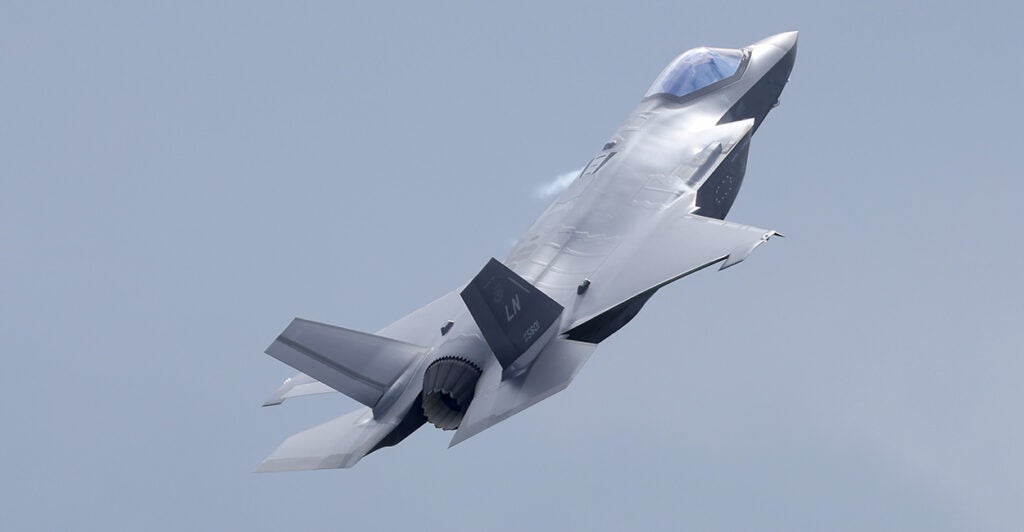The Defense Department and Lockheed Martin recently announced resumed deliveries of F-35 aircraft configured with software called Technology Refresh-3, or TR-3.
Although a truncated version of the TR-3 software is part of the package, this resumption is a milestone that comes after a yearlong freeze in which undelivered F-35s accumulated and collected dust.
The TR-3 configuration, which includes a more powerful processor, enhanced software, and a new cockpit display, represents a critical evolution in the capabilities of the F-35, laying the groundwork for the forthcoming and more advanced Block 4 upgrade.
The resumption of F-35 deliveries isn’t just a technical or logistical achievement; it is a strategic necessity. The F-35, with its advanced sensors, communications suites, and networked capabilities, significantly enhances the ability of the U.S. and allied forces to operate effectively.
That’s going to be imperative in the event of a conflict in the Indo-Pacific.
The Indo-Pacific region increasingly has become a focal point of geopolitical tension, with Chinese troops contesting both the maritime and land borders of American partners and allies throughout the region.
Referring to U.S. Indo-Pacific Command, Defense Secretary Lloyd Austin said in a May 3 speech: “INDOPACOM is working with our regional allies and partners like never before.”
As the fighter jet of choice for key allies, the F-35 is crucial for maintaining a continuous presence and supporting advanced air power.
Japan, for example, has been increasing its F-35 fleet in response to the rapid modernization and expansion of China’s fifth-generation J-20 fighters. This expansion also has compelled the U.S. Air Force, Navy, and Marine Corps to prioritize deploying F-35s to the Pacific as a countermeasure against the J-20.
In fact, the Pentagon recently confirmed the first-ever forward deployment of fifth-generation F-35A fighters to Japan’s Misawa Air Base. They are replacing older F-16s and increasing the base’s fighter complement from 36 to 48 aircraft, or a 33% jump.
This strategic move not only underscores the importance of the F-35 in maintaining air superiority, but highlights ongoing efforts to strengthen defense partnerships and ensure readiness in the face of evolving threats. Thus, the presence of F-35s in the Indo-Pacific isn’t just about numbers but the qualitative edge the fighters bring.
The integration of TR-3 and the forthcoming Block 4 upgrades will solidify the F-35’s role as a cornerstone of modern air combat, providing unmatched capabilities to counter China and support allied operations across the Indo-Pacific.
The Pentagon’s lifting of the yearlong freeze on F-35 stealth fighter deliveries is beneficial for three reasons:
1. Enhanced Operational Readiness. The resumed F-35 deliveries ensure that U.S. and allied forces can maintain a high state of operational readiness. With the TR-3 upgrades, these aircraft are better equipped to handle the complex and dynamic threats posed by modern adversaries, enhancing overall mission effectiveness.
2. Strengthening Alliances. By providing F-35s to allies in the Indo-Pacific, the U.S. bolsters defense ties and fosters greater military cooperation. This not only deters potential aggressors but demonstrates a unified commitment to regional stability and collective security.
3. Technological Superiority. The TR-3 configuration and the future Block 4 upgrades ensure that the U.S. remains at the cutting edge of military technology, providing a decisive advantage in any conflict. TR-3 directly enhances F-35 capabilities and allows the U.S. and allies to maintain air dominance.
It is also important to note the limitations of the Pentagon’s decision to resume F-35 deliveries, including:
Time and Integration Delays. If an F-35 were to be delivered today, it would not be combat ready until 2025. As China continues to be an aggressor in the Indo-Pacific, the U.S. must be ready now.
On July 24, for example, two Chinese military aircraft were detected, tracked, and intercepted in the Alaskan Air Defense Identification Zone. It is evident that aircraft readiness is paramount now more than ever.
Woke-Industrial Complex. Senior officials at Lockheed Martin—including a former three-star general and director of supply chain operations and the vice president of the Air Force’s $1.7 trillion F-35 program—have been too focused on training in diversity, equity, and inclusion, or DEI, rather than enhancing F-35 readiness.
In 2021, Lockheed hosted a Zoom call for senior officials that “deconstructed white male privilege.” This woke focus has detracted from critical improvements needed for the F-35 program, including the TR-3 upgrade.
Supply-Chain Challenges. The yearlong freeze has caused significant disruption in the supply chain, affecting production schedules, and leading to a backlog of undelivered jets with no clear indication of delivery. This may result in delays in future deliveries and maintenance cycles, impacting the readiness and availability of the F-35 fleet? for the U.S. and allies.
Budget Constraints. TR-3 and forthcoming Block 4 upgrades are expensive and have run over budget by roughly $1 billion, lawmakers say. Budgetary constraints and other defense priorities could limit the speed and extent of these upgrades across the fleet, potentially affecting the overall modernization timeline.
The ongoing delay in the F-35 Joint Strike Fighter’s latest upgrades, for example, was one factor in the Air Force’s recent decision to purchase fewer jets in fiscal year 2025, which begins Oct. 1.
